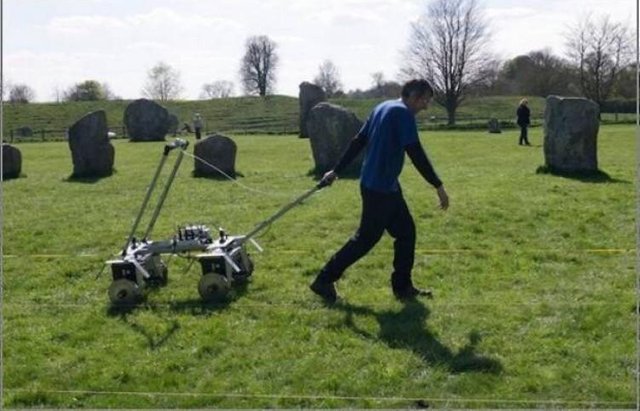Archaeologists Discover The Secrets Buried Under the Avebury Stone Site

Avebury stone monument located in Wiltshire, England, is still considered to have many mysteries, especially about the establishment and use. Now, the mystery increases with the discovery of a secret square megalithic monument beneath the prehistoric rock site. The new site is believed to be older than the site on it.
The discovery was revealed by Mark Gillings, archaeological academic director at the School of Archeology and Ancient History at Leicester University. "We detected and mapped a series of standing and historical rocks that were previously buried and hidden in imperfect circumstances, which are thought to have been damaged in the 17th and 18th centuries," he said.
Gillings explains, the discovery of a very striking and unique square megalithic monument within the Avenury site has the potential to be one of the first ancient structures on this amazing site.
This new discovery is surprising for an old site that has been studied seriously by archaeologists since the 1600s. The Avebury site in the south-west of England is one of the most mysterious ancient monuments in the country. The Neolithic monument is estimated to have been built between 4,850-4200 years ago, quoting from English Heritage.
Together with Stonehenge, Silbury Hill, and Windmill Hill, this newly discovered monument could be a sacred location used by ancient people to perform rituals and gatherings, whose aims are still shrouded in mystery.
The Avebury site consists of a henge (a period of nelotic period, usually composed of oval-shaped fortresses to protect a specific area within it) with an area of 3,270 feet. There is a ditch and a dike. The site also consists of a stone circle, composed by nearly 100 circles of gigantic stones, with two smaller stone circles.
In 1939, Alexander Keiller, a descendant of amateur archaeologists, realized that some stones in the inner circle, appear to form a right angle to the ranks. He was convinced that the little clue of the square might be a remnant of the medieval remains. Unfortunately the second world war will soon erupt, so Keiller was then unable to continue his archaeological survey.
In a recent study, Gillings uses ground-penetrating radar, which maps the ground resistance through sound waves. He found some interesting things: high object resistance levels (assumed as buried stones), lower resistant plots of land (possibly buried deep rocks or building remains), and low resistance areas (possibly holes that have been Destroyed).
The orientation of this embedded stone forms a square. Gilling reports it in his studies, but has not been submitted to the journal for review.
Apparently, the right-angled arrangement of the stone Keiller finds forms a square stone that surrounds a circular area known as the Obelisk. When the monument of the circle from the late Neolithic period has been known, square monuments are a strange thing then, the researchers noted.
This new discovery could unfold why the Avebury monument was built. Researchers have speculated, among other things, that the possibility is that the square determines the barrier boundary of the first building, or residence in the area, formerly used as the center of the inner circle.
"The first work completed by Keiller in 1930 invented a truly new monument in the heart of the oldest historical stone circle in the world, using a technique he never imagined, and there will still be much to be solved at Avebury if We have the right questions, "said Nick Snashall, National Trust Archaeologist at Avebury in a statement.
Nice post!
Very strong search money #ripenglish
Hahaha.anjenf
Mcam dya enggak, pdahal paling kuat dya, ntar lagi kontol2nya di posting tuk cari uang
Mcam dya gaak, ntr lgi kontol2 ko ko post tuk cari uang
Amazing post! Please chek my post. I hope to enjoy it :) @nakedchef89
https://steemit.com/history/@nakedchef89/what-is-the-oldest-civilization-on-earth